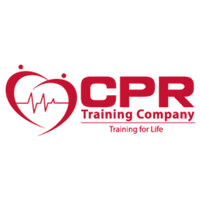Workplace CPR training is essential to employee safety that can save lives in emergencies. According to the American Heart Association, approximately 10,000 cardiac arrests occur in the workplace annually, and the survival rate is only 5-7% without immediate intervention. CPR training equips employees with the knowledge and skills to respond quickly and effectively in case of an emergency, increasing the chances of survival for the victim.
The value of workplace CPR training goes beyond just saving lives. It also helps to create a culture of safety in the workplace. When trained in CPR, employees become more aware of potential hazards and are more likely to take proactive steps to prevent accidents. CPR training can also boost employee morale and confidence, as they feel empowered to take action in an emergency situation. Additionally, providing CPR training to employees can demonstrate to clients and customers that the company takes safety seriously and is committed to protecting its employees and customers.
Importance of Workplace CPR Training
Workplace CPR training is a valuable investment for any organization, regardless of its size or industry. It provides employees with the knowledge and skills needed to respond quickly and effectively in a medical emergency, potentially saving lives and reducing the risk of long-term health complications.
One of the key benefits of workplace CPR training is that it helps to create a safer work environment. Accidents and medical emergencies can happen anywhere, and having trained employees who can respond appropriately can make a significant difference in the outcome of such situations. CPR training can also help reduce the risk of workplace injuries and fatalities, which can significantly impact employee morale, productivity, and the company's bottom line. Offering CPR training is one way to demonstrate this commitment to employee well-being.
Key Points:
- Increased Safety
- Employee Confidence
Components of Effective CPR Training
Effective CPR training should include hands-on practice, AED usage, and first aid basics. These components help prepare individuals to respond quickly and effectively during an emergency.
Hands-On Practice
Hands-on practice is a crucial component of CPR training. It allows individuals to learn and practice the correct techniques for performing CPR. Instructors should provide ample opportunities for participants to practice on manikins and receive feedback on their technique. This helps individuals build confidence and feel prepared to respond in an emergency situation.
AED Usage
Automated External Defibrillators (AEDs) are becoming increasingly common in workplaces, schools, and public spaces. CPR training should include instructions on using an AED and when and where to find one. Participants should learn how to place the AED pads on the patient properly and how to follow the voice prompts provided by the device.
First Aid Basics
In addition to CPR and AED usage, effective CPR training should also cover basic first aid skills. This includes recognizing and responding to common medical emergencies such as choking, heart attacks, and strokes. Participants should also learn how to assess a patient's condition properly and communicate with emergency medical services (EMS) personnel.
Effective CPR training should include hands-on practice, AED usage, and first aid basics. By providing comprehensive training, individuals can feel confident and prepared to respond quickly and effectively during an emergency.
Implementing Workplace CPR Training
Selecting a Program
When selecting a CPR training program for the workplace, there are a few key factors to consider. First, choosing a program from a reputable organization, such as the CPR Training Company, an authorized American Heart Association training provider, is important. This ensures that the training meets high standards and is based on the latest guidelines. The CPR Training Company specifically helps large and small workplace settings develop American Heart Association instructors to meet any CPR training need.
Another important consideration is the format of the training. Some programs offer online or self-paced options, while others require in-person instruction. It is important to choose a format that fits the needs of the workplace and allows employees to learn effectively while meeting regulatory requirements.
Finally, the cost of the program should be taken into account. While it is important to invest in quality training, it is also important to choose a program that is affordable and fits within the organization's budget.
Scheduling Regular Sessions
Once a training program has been selected, it is important to schedule regular sessions to ensure that employees are up-to-date on their CPR skills. In addition to scheduling regular sessions, it is important to ensure that new employees receive CPR training as part of their onboarding process. This ensures that all employees are trained and prepared to respond in the event of an emergency.
By implementing workplace CPR training, organizations can help ensure their employees' safety and create a culture of preparedness. With the right program and scheduling, employees can feel confident in their ability to respond in an emergency situation.
